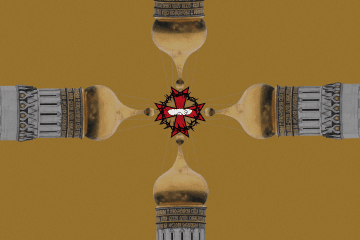- Category
- World
Ukraine Could Become an EU Member by 2030. Is This a Long Time?

The European Union is expanding, but gradually. Years of waiting are a typical practice for all new members.
In June 2024, Ukraine held its first Intergovernmental Conference on joining the EU, marking the start of official membership negotiations. This is an important step for Ukraine, a country that has spent many years striving to become an EU member and has faced significant challenges along the way. One of these challenges is a full-scale war, which also served as an impetus to accelerate the process.
As early as March 2022, Ukraine submitted its application for EU membership, received candidate status in June 2022, and was granted permission to start negotiations in December 2023. It is expected that by 2025, the first substantial progress will be made, as any country's accession to the EU involves numerous reforms to meet European legislative standards.
Today, experts suggest that Ukraine will likely become a member of the European Union in 2029 or 2030, just under eight years after submitting its application and six years after the start of official negotiations.
It might seem that this process is quite long. However, for the most recent EU enlargements, this is standard practice, as countries face numerous requirements and consequently must carry out all necessary reforms. This transition involves moving away from the influence of the post-Soviet socialist-communist regime and aligning with those who share European values.
This text discusses several European countries whose EU accession took years.
Poland / 10 years
Poland almost immediately embarked on the path of European development after the collapse of the Socialist Bloc. It submitted its EU membership application in April 1994, but the country officially became an EU member only ten years later, on May 1, 2004, after fulfilling all EU conditions. Ukraine is often compared to Poland at that time: a large agricultural sector with many similar economic problems and significant previous influence from the communist bloc.
Romania and Bulgaria / 12 years
Romania and Bulgaria applied for EU membership in 1995, but negotiations started only four years later, in 1999. Eventually, the countries joined the EU in 2007, and the transition to European legislative standards took a long 12 years.
Croatia / 13 years
Croatia's accession to the EU was not simple, partly due to the aftermath of a severe war. The application was submitted in 2000, candidate status was granted in 2004, and negotiations started a year later, in 2005. Croatia officially became an EU member in 2013.
Lithuania, Latvia, Estonia / 9 years
Ukraine's three major Baltic allies took just under ten years to join the EU. They applied in 1995 (at different times), and it took two years to approve the applications. Negotiations with each country began at different times:
1997 — Estonia
1998 — Latvia
2000 — Lithuania
All three countries became EU members in 2004, during one of the largest expansions in European history when the Union accepted ten new members.
Why Does the EU Accession Process Take So Long?
In reality, it's straightforward: Ukrainian legislation must comply with European norms. This involves 35 chapters divided into six clusters, covering the judicial system, rule of law, human rights, public procurement, environmental standards, and more. When Poland joined the EU, there were 31 chapters, and the requirements have increased over time.
Ukraine must implement all these changes and undergo screenings—evaluations by the international community to monitor the progress of reforms. Additionally, as an applicant for membership, Ukraine needs to work with existing EU members to gain their support. This is a collaborative effort, though most of the tasks lie with Ukraine.
According to Olga Stefanishyna, the Deputy Prime Minister for European Integration, Ukraine could join faster than 2030, but this depends not only on Ukraine's willingness.
-29a1a43aba23f9bb779a1ac8b98d2121.jpeg)

-c9be02aad2c169e14ebc2a41d0ba02dc.jpg)
-605be766de04ba3d21b67fb76a76786a.jpg)
-56e0bfa71829348120777fba0ad5ba46.png)


-46f6afa2f66d31ff3df8ea1a8f5524ec.jpg)